 W
WThe 26th of July Movement was a Cuban vanguard revolutionary organization and later a political party led by Fidel Castro. The movement's name commemorates its 26th July 1953 attack on the army barracks on Santiago de Cuba in an attempt to start the overthrowing of the dictator Fulgencio Batista.
 W
WAfghanistan Mujahedin Freedom Fighters Front was a united front of four Afghan paramilitary factions, formed on the initiative of Maoist groups, including the Revolutionary Group of the Peoples of Afghanistan and the Liberation Organization of the People of Afghanistan (SAMA)—together with moderate Islamists including the Islamic Movement of Afghanistan, in June 1979. They set aside their ideological differences in the fight against a common enemy. The Front fought against the pro-Soviet government and later also the Soviet Army during the Soviet–Afghan War.
 W
WThe Anti-Fascist People's Freedom League, was the main political alliance in Burma from 1945 until 1958. It was founded by the Communist Party of Burma (CPB) led by Thakin Soe, the Burma National Army (BNA) led by Aung San, and the People's Revolutionary Party (PRP) at a meeting held between 1–3 March 1945 as a reorganised version of the Anti-Fascist Organisation (AFO), formed to resist the Japanese occupation. The new organisation aimed to resist the Japanese occupation and achieve independence.
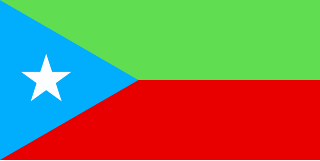 W
WThe Balochistan Liberation Army, also known as the Baloch Liberation Army, is a militant organization based in Afghanistan. The BLA is listed as a terrorist organization by Pakistan, the United Kingdom and the United States. Since 2004, the BLA has waged a violent armed struggle against Pakistan for what it claims as self-determination for the Baloch people and separation of Balochistan from Pakistan and has been involved in ethnic-cleansing of non-Baloch minorities in Balochistan. The BLA is operating mainly in Balochistan, the largest province of Pakistan where it carries out attacks against the Pakistan Armed Forces, civilians and foreign nationals. The Baloch Liberation Army became publicly known during the summer of 2000, after it claimed credit for a series of bombing attacks on Pakistani authorities.
 W
WThe Chetniks, formally the Chetnik Detachments of the Yugoslav Army, and also the Yugoslav Army in the Homeland and the Ravna Gora Movement, was a Yugoslav royalist and Serbian nationalist movement and guerrilla force in Axis-occupied Yugoslavia. Although it was not a homogeneous movement, it was led by Draža Mihailović. While it was anti-Axis in its long-term goals and engaged in marginal resistance activities for limited periods, it also engaged in tactical or selective collaboration with the occupying forces for almost all of the war. The Chetnik movement adopted a policy of collaboration with regard to the Axis, and engaged in cooperation to one degree or another by establishing modus vivendi or operating as "legalised" auxiliary forces under Axis control. Over a period of time, and in different parts of the country, the movement was progressively drawn into collaboration agreements: first with the puppet Government of National Salvation in the German-occupied territory of Serbia, then with the Italians in occupied Dalmatia and Montenegro, with some of the Ustaše forces in northern Bosnia, and, after the Italian capitulation in September 1943, with the Germans directly.
 W
WViệt Minh was a national independence coalition formed at Pác Bó by Hồ Chí Minh on May 19, 1941. The Việt Nam Độc Lập Đồng Minh Hội had previously formed in Nanjing, China, at some point between August 1935 and early 1936 when Vietnamese nationalist parties formed an anti-imperialist united front. This organization soon lapsed into inactivity, only to be revived by the Indochinese Communist Party (ICP) and Hồ Chí Minh in 1941. The Việt Minh established itself as the only organized anti-French and anti-Japanese resistance group. The Việt Minh initially formed to seek independence for Vietnam from the French Empire. The United States supported France. When the Japanese occupation began, the Việt Minh opposed Japan with support from the United States and the Republic of China. After World War II, the Việt Minh opposed the re-occupation of Vietnam by France, resulting in the Indochina War, and later opposed South Vietnam and the United States in the Vietnam War. The political leader and founder of Việt Minh was Hồ Chí Minh. The military leadership was under the command of Võ Nguyên Giáp. Other founders were Lê Duẩn and Phạm Văn Đồng.
 W
WThe Democratic Revolutionary Front for the Liberation of Arabistan was an Iranian Arab militant group founded in 1979, most famous for the Iranian Embassy siege of 1980 in London, United Kingdom. It was led by Oan Ali Mohammed, who was killed during the siege by SAS troops.
 W
WFalintil originally began as the military wing of the political party FRETILIN of East Timor. It was established on 20 August 1975 in response to FRETILIN’s political conflict with the Timorese Democratic Union (UDT).
 W
WThe Forest Brothers were Baltic and Estonian partisans who waged guerrilla warfare against Soviet rule during the Soviet invasion and occupation of the three Baltic states during, and after, World War II. Similar anti-Soviet Central and Eastern European resistance groups fought against Soviet and communist rule in Bulgaria, Poland, Romania, and western Ukraine.
 W
WFree France and its Free French Forces was the government-in-exile led by Charles de Gaulle during the Second World War, and its military forces, that continued to fight against the Axis powers as an Allied nation, following the Fall of France. Set up in London in June 1940, it organised and supported the Resistance in Occupied France, and established a foothold within several French colonies in Africa.
 W
WThe Free Papua Movement is an umbrella term for the independence movement established during 1965 in the West Papuan or West New Guinea territory which is currently being administrated by Indonesia as the provinces of Papua and West Papua, also formerly known as Papua, Irian Jaya and West Irian.
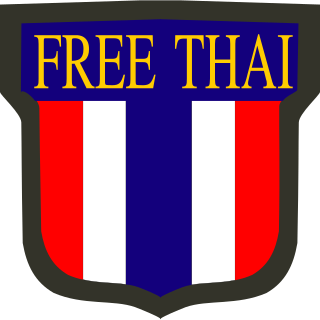 W
WThe Free Thai Movement was a Thai underground resistance movement against Imperial Japan during World War II. Seri Thai were an important source of military intelligence for the Allies in the region.
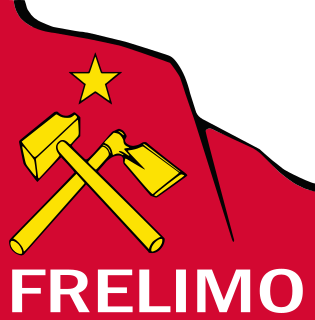 W
WThe Mozambique Liberation Front (FRELIMO), from the Portuguese Frente de Libertação de Moçambique is the dominant political party in Mozambique. Founded in 1962, FRELIMO began as a nationalist movement fighting for the independence of the Portuguese Overseas Province of Mozambique. Independence was achieved in June 1975 after the Carnation Revolution in Lisbon the previous year. At the party's 3rd Congress in February 1977, it became an officially Marxist–Leninist political party. It identified as the Frelimo Party (Partido Frelimo).
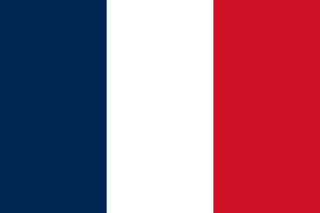 W
WThe French Liberation Army was the reunified French Army that was created in 1943 when the Army of Africa led by General Giraud was combined with the Free French Forces of General de Gaulle.
 W
WThe Greek People's Liberation Army, also mistakenly called the National People's Liberation Army, was the military arm of the left-wing National Liberation Front (EAM) during the period of the Greek Resistance until February 1945, when, following the Dekemvriana clashes and the Varkiza Agreement, it was disarmed and disbanded.
 W
WThe Indian Legion, officially the Free India Legion or 950th (Indian) Infantry Regiment, was a military unit raised during the Second World War initially as part of the German Army and later the Waffen-SS from August 1944. Intended to serve as a liberation force for British-ruled India, it was made up of Indian prisoners of war and expatriates in Europe. Because of its origins in the Indian independence movement, it was known also as the "Tiger Legion", and the "Azad Hind Fauj". As part of the Waffen-SS it was known as the Indian Volunteer Legion of the Waffen-SS.
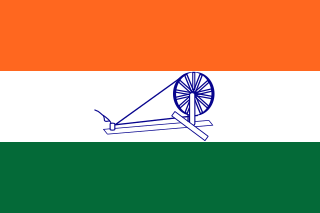 W
WThe Indian National Army was an armed force formed by Indian nationalists and Imperial Japan in 1942 in Southeast Asia during World War II. Its aim was to secure Indian independence from British rule. It fought alongside Japanese soldiers in the latter's campaign in the Southeast Asian theatre of WWII. The army was first formed in 1942 under Mohan Singh, by Indian PoWs of the British-Indian Army captured by Japan in the Malayan campaign and at Singapore. This first INA collapsed and was disbanded in December that year after differences between the INA leadership and the Japanese military over its role in Japan's war in Asia. Rash Behari Bose handed over INA to Subhas Chandra Bose. It was revived under the leadership of Subhas Chandra Bose after his arrival in Southeast Asia in 1943. The army was declared to be the army of Bose's Arzi Hukumat-e-Azad Hind. Under Bose's leadership, the INA drew ex-prisoners and thousands of civilian volunteers from the Indian expatriate population in Malaya and Burma. This second INA fought along with the Imperial Japanese Army against the British and Commonwealth forces in the campaigns in Burma: at Imphal and Kohima, and later against the Allied retaking of Burma.
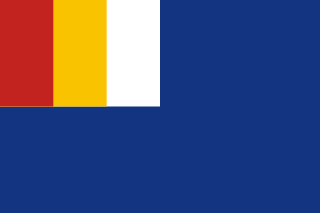 W
WThe Inner Mongolian Army, also sometimes called the Mengjiang National Army, referred to the Inner Mongolian military units in service of Imperial Japan and its puppet state of Mengjiang during the Second Sino-Japanese War, particularly those led by Prince Demchugdongrub. It was primarily a force of cavalry units, which mostly consisted of ethnic Mongols, with some Han Chinese infantry formations.
 W
WThe Irish Republican Army (IRA) was an Irish republican revolutionary paramilitary organisation. The ancestor of many groups also known as the Irish Republican Army, and distinguished from them as the Old IRA, it was descended from the Irish Volunteers, an organisation established on 25 November 1913 that staged the Easter Rising in April 1916. In 1919, the Irish Republic that had been proclaimed during the Easter Rising was formally established by an elected assembly, and the Irish Volunteers were recognised by Dáil Éireann as its legitimate army. Thereafter, the IRA waged a guerrilla campaign against the British occupation of Ireland in the 1919–1921 Irish War of Independence.
 W
WThe Khmer Serei were an anti-communist and anti-monarchist guerrilla force founded by Cambodian nationalist Son Ngoc Thanh. In 1959, he published 'The Manifesto of the Khmer Serei' claiming that Sihanouk was supporting the 'communization' of Kampuchea. In the 1960s, the Khmer Serei were accumulating in numbers and were on their way to becoming a formidable fighting force.
 W
WThe Korean Liberation Army, established on September 17, 1940 in Chungking, China, was the armed force of the Provisional Government of the Republic of Korea. Its commandant was General Ji Cheong-cheon, with General Lee Beom-seok, a hero of the Battle of Cheongsanri and future prime minister of South Korea as the Chief of Staff. Effectively a part of the Chinese forces upon which it was dependent, the army was limited by available manpower and did not get much above 339 strong. The KLA became the basis of the modern day Republic of Korea Armed Forces.
 W
WThe Kosovo Liberation Army was an ethnic-Albanian separatist militia that sought the separation of Kosovo from the Federal Republic of Yugoslavia (FRY) and Serbia during the 1990s and the eventual creation of Greater Albania due to the presence of a vast ethnic majority of Albanians in the region, stressing Albanian culture, ethnicity and nation.
 W
WLatvian national partisans were the Latvian national partisans who waged guerrilla warfare against Soviet rule during and after Second World War.
 W
WThe Liberation Army of South Vietnam (LASV), or Viet Cong's army, was the official army of the National Liberation Front of South Vietnam (NLF), or more commonly known in the West as Viet Cong (VC). The LASV forces were independent of the People's Army of Vietnam (PAVN) of North Vietnam, but were closely allied with each other in war against the US forces and South Vietnamese Army of the Republic of Vietnam (ARVN). The LASV was unofficially established after 1954 and was recognized as main battle forces in South Vietnam by North Vietnam in 1961. The LASV appeared to be outside of the control of the People's Army of Vietnam, but under the command of the Central Office for South Vietnam, politically and militarily controlled by Hanoi and functioned as a branch of the North Vietnamese Army.
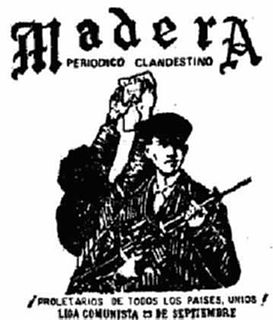 W
WThe Liga Comunista 23 de Septiembre, or LC23S, was a Marxist-Leninist urban guerrilla movement that emerged in Mexico in the early 1970s. The result of the merging of various armed revolutionary organizations active in Mexico prior to 1974, with the objective of creating a united front to combat the Mexican government; the name was chosen to commemorate an unsuccessful guerrilla assault on the barracks of Ciudad Madera in the northern state of Chihuahua led by former schoolteacher Arturo Gámiz and the People's Guerrilla Group on September 23, 1965. The LC23S' militancy was made up mainly of young disenfranchised university students who saw any opportunity of a peaceful political transformation die in the aftermath of the 1968 student movement and then to be buried in the violent crackdown of 1971. Its long term objective was the “elimination of the capitalist system and bourgeois democracy, which would be replaced by a socialist republic and the dictatorship of the proletariat”.
 W
WThe Makabayang Katipunan ng mga Pilipino, better known as the Makapili, was a militant group formed in the Philippines in 1944 during World War II to give military aid to the Imperial Japanese Army. The group was meant to be on equal basis with the Japanese Army and its leaders were appointed with ranks that were equal to their Japanese counterparts.
 W
WThe Maquis du Mont Mouchet were a group of French resistance fighters during the Second World War that were based at Mont Mouchet.
 W
WThe Mukti Bahini, also known as the Bangladesh Forces, was the guerrilla resistance movement consisting of the Bangladeshi military, paramilitary and civilians during the War of Liberation that transformed East Pakistan into Bangladesh in 1971. An earlier name Mukti Fauj was also used.
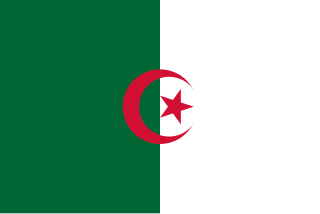 W
WThe National Liberation Army or ALN was the armed wing of the nationalist National Liberation Front of Algeria during the Algerian War. After the independence of Algeria from France in 1962, the ALN was converted into the regular Algerian People's National Armed Forces.
 W
WThe National Liberation Front is a nationalist political party in Algeria. It was the principal nationalist movement during the Algerian War and the sole legal and the ruling political party of the Algerian state until other parties were legalised in 1989. The FLN was established in 1954 from a split in the Movement for the Triumph of Democratic Liberties from members of the Special Organisation paramilitary; its armed wing, the National Liberation Army, participated in the Algerian War from 1954 to 1962. After the Évian Accords of 1962, the party purged internal dissent and ruled Algeria as a one-party state. After the 1988 October Riots and the Algerian Civil War (1991–2002) against Islamist groups, the FLN was reelected to power in the 2002 Algerian legislative election, and has generally remained in power ever since, although sometimes needing to form coalitions with other parties.
 W
WThe National Liberation Movement, also translated as National Liberation Front, was an Albanian communist resistance organization that fought in World War II. It was created on 16 September 1942, in a conference held in Pezë, a village near Tirana, and was led by Enver Hoxha. Apart from the figures which had the majority in the General Council it also included known nationalists like Myslim Peza. In May 1944, the Albanian National Liberation Front was transformed into the government of Albania and its leaders became government members, and in August 1945, it was replaced by the Democratic Front.
 W
WThe National Liberation Movement of Ahwaz is an Arab nationalist and separatist organisation whose goal is to establish an independent state called Ahwaz in Iran.
 W
WThe National Movement for the Liberation of Azawad or the Azawad National Liberation Movement, formerly the National Movement of Azawad, is a political and military organisation based in Azawad in northern Mali.
 W
WNorth Korean People's Liberation Front is a militant paramilitary North Korean defectors' organization, formed by former defecting members of the Korean People's Army, planning to overthrow the North Korean government. It is based in Seoul, South Korea.
 W
WThe Ogaden National Liberation Front is a separatist rebel group fighting for the right to self-determination for Somalis in the Somali Region of Ethiopia. The ONLF, established in 1984, demands for the autonomy of this region and has claimed responsibility for several attacks since the beginning of 1994 aimed at Ethiopian forces in the area, which the government considers a region under the new federal system. The area of the Somali region stretches at least about 330,000 square kilometres and has over 3 million people, mainly from the Absame Somali tribe. The ONLF claims that Ethiopia is an occupying government, despite the Ogaden being represented in the Ethiopian federal government by groups including the opposition Somali People's Democratic Party (SPDP). The ONLF is composed mainly of members of the Ogaden clan, specifically "the makaahiil tribe of the Ogaden". The armed wing of the ONLF is the Ogaden National Liberation Army (ONLA). In October 2018, ONLF signed a peace agreement with the federal government and ceased hostilities, with former fighters beginning the process of societal reintegration.
 W
WThe People's Army of Vietnam, also known as the Vietnamese People's Army (VPA), is the military force of the Socialist Republic of Vietnam. The PAVN is a part of the Vietnam People's Armed Forces and includes: Ground Force, Navy, Air Force, Border Defence Force, Coast Guard, Cyberspace Operations, and Mausoleum Defence Force. However, Vietnam does not have a separate Ground Force or Army branch. All ground troops, army corps, military districts and specialised arms belong to the Ministry of Defence, directly under the command of the Central Military Commission, the Minister of Defence, and the General Staff of the Vietnam People's Army. The military flag of the PAVN is the flag of the Socialist Republic of Vietnam, with the words Quyết thắng added in yellow at the top left.
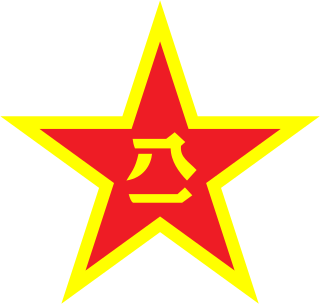 W
WThe People's Liberation Army (PLA) is the regular armed forces of the People's Republic of China (PRC) and of the PRC's founding and ruling political party, the Communist Party of China (CPC). Besides the Central Military Commission and several minor units directly under it, the PLA has five major service branches: the Ground Force, Navy, Air Force, Rocket Force, and the Strategic Support Force. A majority of military units around the country are assigned to one of five theater commands by geographical location. The PLA is the world's largest military force and constitutes the second largest defence budget in the world. The PLA is one of the fastest modernising militaries in the world and has been termed as a potential military superpower, with significant regional power and rising global power projection capabilities. Per Credit Suisse in 2015, the PLA is the world's third-most powerful military.
 W
WThe Polisario Front, Frente Polisario, FRELISARIO or simply POLISARIO, from the Spanish abbreviation of Frente Popular de Liberación de Saguía el Hamra y Río de Oro, is a Sahrawi rebel national liberation movement aiming to end Moroccan presence in the Western Sahara. It is a consultative member of the Socialist International. The United Nations considers the Polisario Front to be the legitimate representative of the Sahrawi people and maintains that the Sahrawis have a right to self-determination. The Polisario Front is outlawed in the parts of Western Sahara under Moroccan control, and it is illegal to raise its party flag there.
 W
WThe Irish Republican Army, also known as the Provisional Irish Republican Army, was an Irish republican paramilitary organisation that sought to end British rule in Northern Ireland, facilitate Irish reunification and bring about an independent republic encompassing all of Ireland. It was the most active republican paramilitary group during the Troubles. It saw itself as the military force of an all-island Irish Republic, and as the sole legitimate successor to the original IRA from the Irish War of Independence. It is designated a terrorist organisation in the United Kingdom and an illegal organisation in the Republic of Ireland, both of whose authority it rejected.
 W
WSecond National Front of Escambray was an independent guerilla group led by Eloy Gutiérrez Menoyo and Dr. Armando Fleites and included Roger Redondo, Ramiro Lorenzo, Jorge Castellón, Jesús Carreras Saya, Lázaro Artola, Genaro Arroyo, and others in the Cuban central Escambray Mountains. William Alexander Morgan was also a part of the Escambray group. While initially the group supported Fidel Castro in his efforts to overthrow Cuban dictator Fulgencio Batista, after Castro took power some of its members joined former Batista soldiers and local farmers in the Escambray Rebellion (1959-1965) opposing Castro.
 W
WThe Soviet partisans were members of resistance movements that fought a guerrilla war against the Axis forces in the Soviet Union, the previously Soviet-occupied territories of interwar Poland in 1941–45 and eastern Finland. The activity emerged after Nazi Germany's Operation Barbarossa was executed during World War II, and it was coordinated and controlled by the Soviet government and modeled on that of the Red Army. The partisans made significant contributions to the war by frustrating German plans to exploit occupied Soviet territories economically, gave considerable help to the Soviet Army by conducting systematic strikes against Germany's rear communication network, disseminated political work among the local population by publishing newspapers and leaflets, and succeeded in creating and maintaining a feeling of insecurity among German forces.
 W
WThe Sudan People's Liberation Movement (SPLM) is a political party in South Sudan. It was initially founded as the political wing of the Sudan People's Liberation Army in 1983. On January 9, 2005 the SPLA, SPLM and Government of Sudan signed the Comprehensive Peace Agreement, ending the civil war. SPLM then obtained representation in the Government of Sudan, and was the main constituent of the Government of the then semi-autonomous Southern Sudan. When South Sudan became a sovereign state on 9 July 2011, SPLM became the ruling party of the new republic. SPLM branches in Sudan separated themselves from SPLM, forming the Sudan People's Liberation Movement-North. Further factionalism appeared as a result of the 2013-2014 South Sudanese Civil War, with President Salva Kiir leading the SPLM-Juba and former Vice President Riek Machar leading the Sudan People's Liberation Movement-in-Opposition.
 W
WThe South West Africa People’s Organisation (SWAPO), officially known as SWAPO Party of Namibia, is a political party and former independence movement in Namibia. It has been the governing party in Namibia since the country achieved independence in 1990. The party continues to be dominated in number and influence by the Ovambo ethnic group.
 W
WThe Ukrainian Insurgent Army was a Ukrainian nationalist paramilitary and later partisan formation. During World War II, it was engaged in guerrilla warfare against the Soviet Union, the Polish Underground State, Communist Poland and Nazi Germany. It was established by the Organization of Ukrainian Nationalists. The insurgent army arose out of separate militant formations of the Organization of Ukrainian Nationalists—Bandera faction, other militant national-patriotic formations, some former defectors of the Ukrainian Auxiliary Police, mobilization of local populations and others. The political leadership of the army belonged to the Organization of Ukrainian Nationalists—Bandera. It was the primary perpetrator of the ethnic cleansing of Poles in Volhynia and Eastern Galicia.
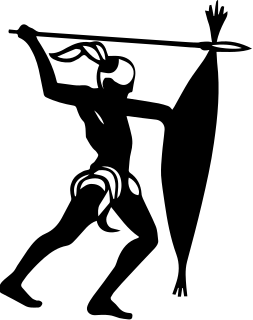 W
WuMkhonto we Sizwe was the armed wing of the African National Congress (ANC), co-founded by Nelson Mandela in the wake of the Sharpeville massacre. Its mission was to fight against the South African government.
 W
WThe Maquis du Vercors was a rural group of the French Forces of the Interior (FFI) (maquis) that resisted the 1940–1944 German occupation of France in World War II. The Maquis du Vercors used the prominent scenic plateau known as the Massif du Vercors as a refuge. Initially the maquis carried out only sabotage and partisan operations against the Germans, but after the Normandy Invasion on 6 June 1944, the leadership of an army of about 4,000 maquis declared the "Free Republic of Vercors," raised the French flag, and attempted to create a conventional army to oppose the German occupation.
 W
WThe Viet Cong, also known as the National Liberation Front of Southern Vietnam or FNL, was an armed communist political organization in South Vietnam and Cambodia. Its military force, the Liberation Army of South Vietnam (LASV), fought against the United States and South Vietnamese governments during the Vietnam War, eventually emerging on the winning side. The LASV had both guerrilla and regular army units, as well as a network of cadres who organized peasants in the territory the Viet Cong controlled. During the war, communist insurgents and anti-war activists claimed that the Viet Cong was an insurgency indigenous to the South, while the U.S. and South Vietnamese governments portrayed the group as a tool of North Vietnam.
 W
WThe Women's Protection Units or Women's Defense Units is an all-female militia involved in the Syrian civil war. The YPJ is part of the Syrian Democratic Forces, the armed forces of Rojava, and is closely affiliated with the male-led YPG. While the YPJ is mainly made up of Kurds, it also includes women from other ethnic groups in Northern Syria.
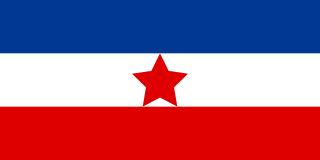 W
WThe Yugoslav Partisans, or the National Liberation Army, officially the National Liberation Army and Partisan Detachments of Yugoslavia, was the Communist-led resistance to the Axis powers in occupied Yugoslavia during World War II.
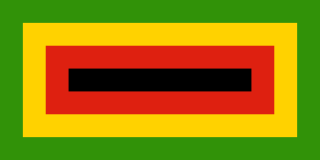 W
WZimbabwe African National Liberation Army (ZANLA) was the military wing of the Zimbabwe African National Union (ZANU), a militant African nationalist organisation that participated in the Rhodesian Bush War against white minority rule of Rhodesia.
 W
WThe Zimbabwe African National Union (ZANU) was a militant organisation that fought against white minority rule in Rhodesia, formed as a split from the Zimbabwe African People's Union (ZAPU). ZANU split in 1975 into wings loyal to Robert Mugabe and Ndabaningi Sithole, later respectively called ZANU–PF and ZANU - Ndonga. These two sub-divisions ran separately at the 1980 general election, where ZANU-PF has been in power ever since, and ZANU - Ndonga a minor opposition party.